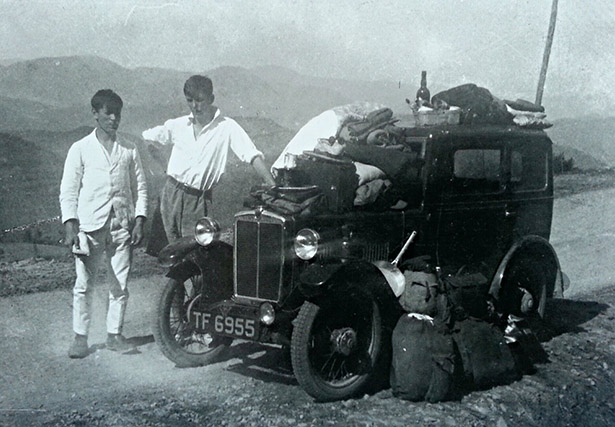October 10, 2015—February 1, 2016
Middlesbrough Institute of Modern Art
Centre Square
Middlesbrough TS1 2AZ
UK
Middlesbrough Institute of Modern Art
Middlesbrough Institute of Modern Art (mima) opened in 2007 as one of the UK’s leading venues for exhibiting and collecting art. Now part of Teesside University, it is moving forward with a vision as a useful museum under a new director, Alistair Hudson, and a recently refreshed curatorial team including Miguel Amado and Elinor Morgan. The useful museum is a civic institution that promotes art as a tool for social change. Its program integrates exhibitions and collection displays with educational activities, off-site projects, and community-focused initiatives.
Localism
True to its new vision as the useful museum, mima is taking a radical approach to curating with Localism. This is an exhibition for and about Middlesbrough and Teesside, an industrial area in the northeast of England that is increasingly vulnerable to the uncertainties of a globalized world. In the mid-19th century, the region exploded into a world center of steel production; today, it faces a challenging economic situation.
Localism reasserts the importance of the local in the development of society. As such, it is conceived as a crowdsourced, user-generated exhibition, critiquing the established methodologies of art presentation—namely, overinvestment in authorship, spectacle, and commerce.
Localism takes stock of the artists who have lived or worked in and around Middlesbrough and Teesside, alongside a narrative of the role creativity played in building the region’s identity, industrial landscape, and culture. Paintings, ceramics, photographs, films, artifacts, archival records, and personal ephemera have been gathered from a series of workshops and open calls. These materials will continue to be amassed throughout the exhibition, the displays regularly updated with contributions from the mima’s constituents.
In the exhibition, a “family tree” of artists connected to Middlesbrough and Teesside grows across the walls in parallel with an immersive environment that introduces the region’s social context. Localism also includes a forum for public meetings and debates and a workshop area for making sessions conducted by residents Adam Clarke, Emily Hesse, Dot Seddon, and the Wonder Whys (mima’s young people’s group).
Past regeneration projects spearheaded by artists will be examined and repurposed. Emily Hesse and James Beighton address the legacy of Linthorpe Pottery, originally established in the 19th century by John Harrison and Christopher Dresser. They combine original wares with their own new pieces, produced from the same Middlesbrough clay seam.
Adam Clarke revisits the story of the Pennyman family, who created the Middlesbrough Settlement in the 1930s, where unemployed miners learned furniture design with Bauhaus student Wilfred Franks, opera with Michael Tippett, sword dancing, and agriculture. Clarke sets in motion New Boosbeck Industries, in which he starts a new line of furniture production, adapting the old Boosbeck Industries system to current technology while retaining its original social ambitions.
Museum 3.0
Localism employs the rhetoric of both leftist activism and right-wing populism to address issues of representation, democracy, entrepreneurialism, and power. The exhibition reasserts the gallery as a public site of collective cultural memory, its meaning and value created by its users. This is the beginning of a proposition to create Museum 3.0: beyond representation and participation, and defined by the sum of the actions of its constituents.
Also at mima:
The Office of Useful Art
Ongoing
mima’s first floor is the Office of Useful Art, the UK headquarters of the Asociación de Arte Útil, initiated by Tania Bruguera. It presents the Arte Útil archive, a growing registry of more than 500 case studies that exemplify this movement. A series of talks and events examine Arte Útil and its aspirations for art to be recalibrated as a way of operating in everyday life. The project is a collaboration with Bruguera and the Van Abbemuseum as part of the The Uses of Art – The Legacy of 1848 and 1989, a project by the European museums confederation L’Internationale.
Margaret Harrison: Accumulations
October 22, 2015–January 24, 2016
The Yorkshire-born artist Margaret Harrison has challenged the establishment via her feminist, subversive practice for more than 50 years. She was one of the founders of the London Women’s Liberation Art Group in 1970, and ever since has been addressing social transformations, from the women’s labor movement to militarization. Today she is readdressing these interests in light of the contemporary economy and media landscape. This exhibition surveys her output from the 1980s to today, focusing on issues of protest and political antagonism.

